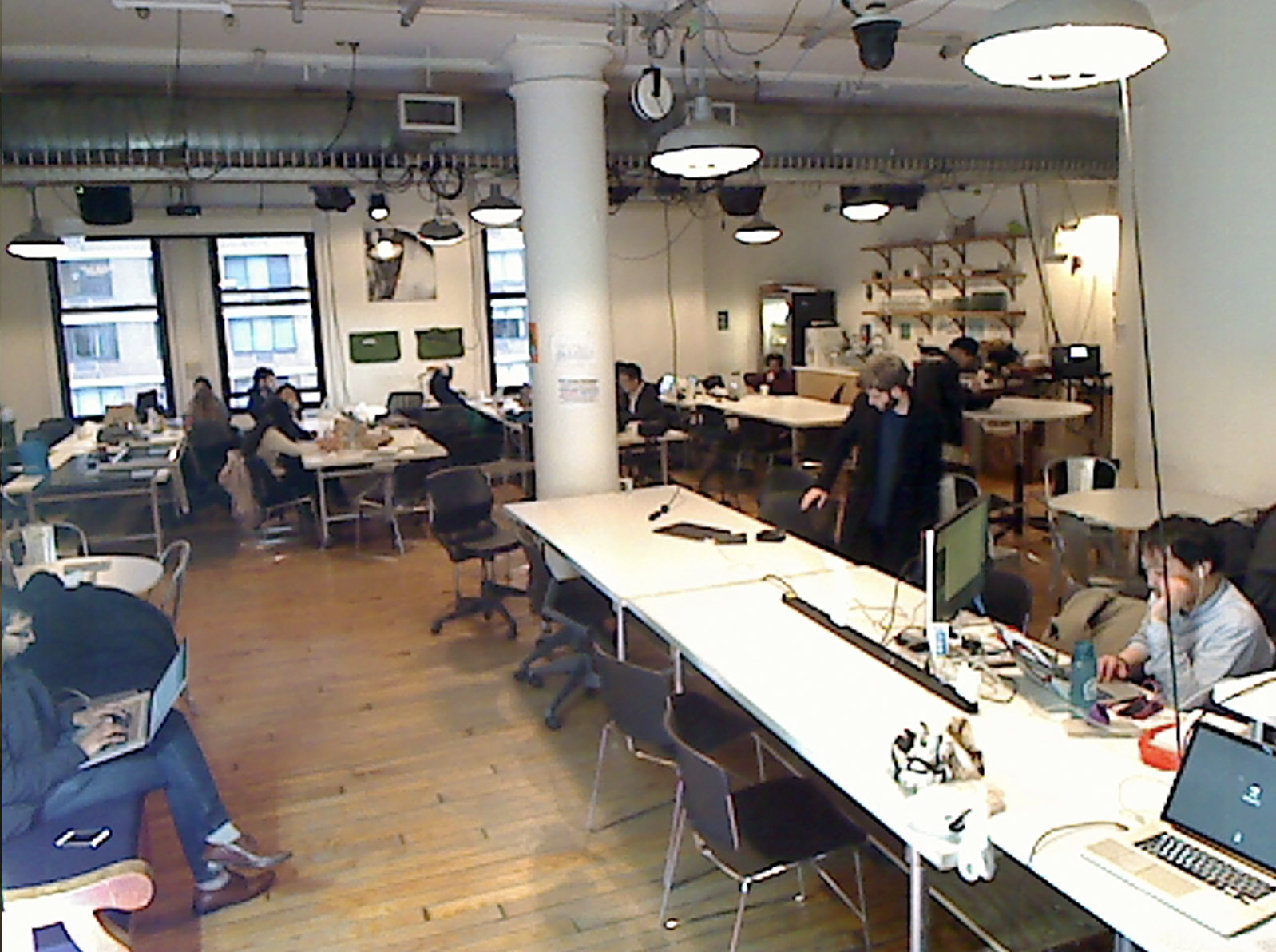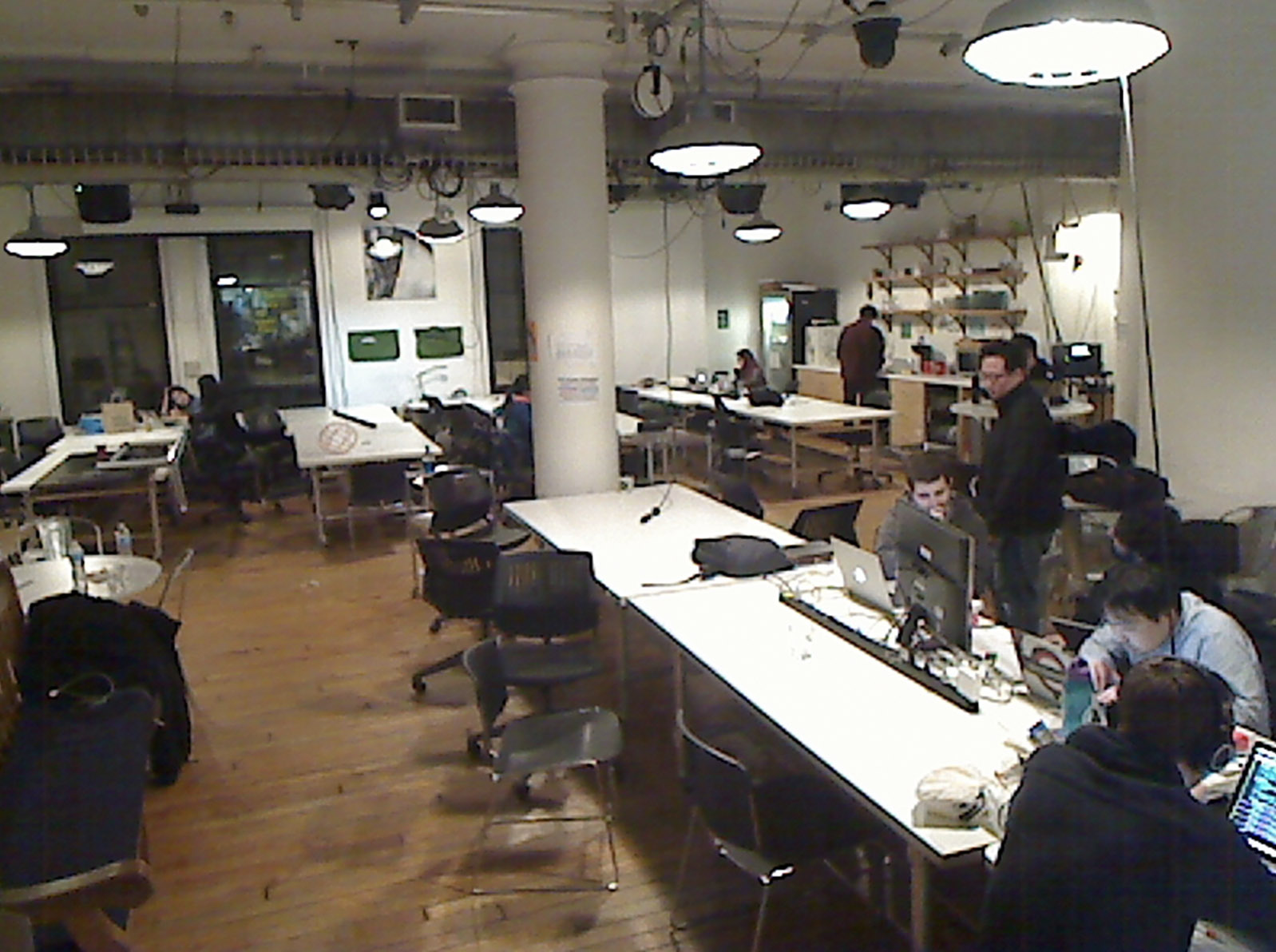Performance Interface
Noon to Night
This piece is called “Noon to Night”. First, a special thanks to Brandon Kader as the performer in the featured video. We had an assignment that suggested making a score and instrument that would be played by someone other than ourselves, and I greatly appreciate Brandon’s performance.
Noon to Night is an audio visual performance, instrument, and proof of concept. At its heart, it is a timelapse of the ITP floor on April 24th, 2017. A visual clock interface is laid over footage of the floor.
Demo Video




The clock is controlled by clicking and dragging the mouse right or left. Dragging to the right increases the time, while dragging to the left turns the clock back. The second hand works on it’s own. For the minute that is currently selected, four recordings of that minute on April 24th, 2017 play in sequence. The recordings are the single second captured at 0 seconds, at 15 seconds, at 30 seconds, and at 45 seconds. The corresponding sound and captured photo is triggered when the second hand is in each position. You hear what was happening during the second the image was taken.
There is a delay effect on the audio. The mouse position at the top of the screen increases the delay time, while at the bottom the delay time approaches zero. This gives an aspect of live performability and gesture that can be controlled in real time.
A timelapse setup consisting of a computer, webcam and microphone was placed on the ITP floor. I programmed a Max MSP patch to take photos and record one second of audio every 15 seconds. At the end, I had enough content to cover noon to night. Once I had my media, I programmed the performance interface in Javascript using p5.js and Tone.js libraries.
The approach from an instrument aspect is to create something that is casual and almost “browsing” in nature. When turned on, it makes noise and visuals on it’s own. However, the act of scrubbing and analyzing the time and things of interest in the frames and audio snippets, creates a different kind of performative engagement. This process of discovery isn’t precise, however. You cannot type in specific times, and the sensitivity of the mouse itself doesn’t lend itself to precision. This is to add more discovering into the use of the instrument. While you might want to know what was happening at 6:00PM exactly, there could be things of more interest at 5:59PM or 6:02PM that you would not have otherwise entered in by typing.
The conceptual approach is that of thinking of an entire space, time, or group of people as an “instrument”. Giving a set chunk of time to use as a tool to be manipulated and explored breaks our normal experience of time. But when treated like a block to be flipped, tapped and rubbed in the manner of an instrument, this span of time shows us something we may not appreciate under normal circumstances. Moments that might have been not noticed or forgotten, and more general, bigger picture sentiments of what it is like to be in this place with these people.
When made into an instrument, this allows someone to have their own process of discovery, finding their own individual memories or broader impressions. The breaking of time is a tool for the user, for them to gain a different perspective on a set time, place, and group of people.